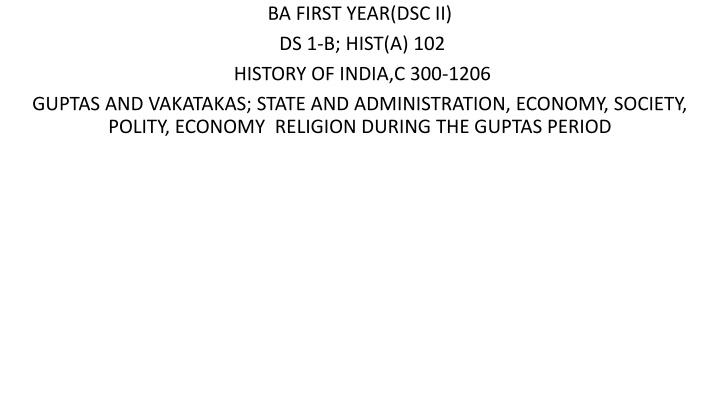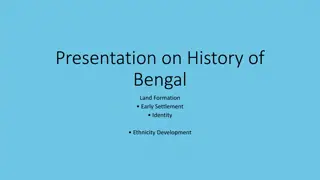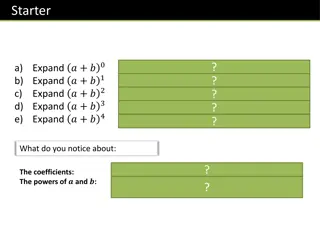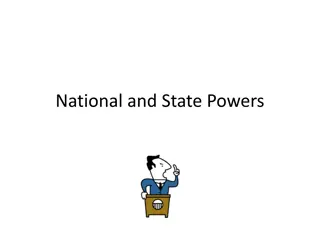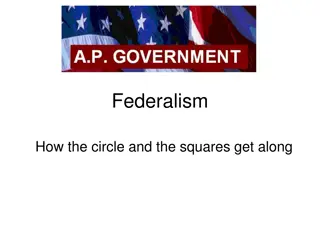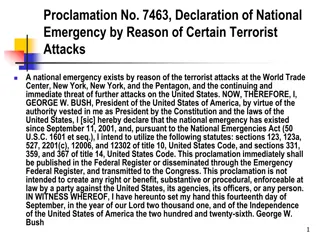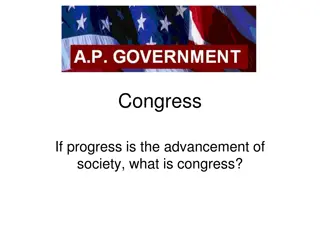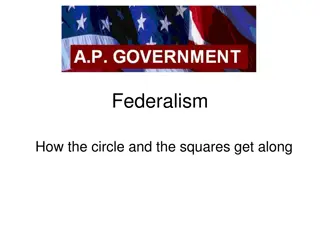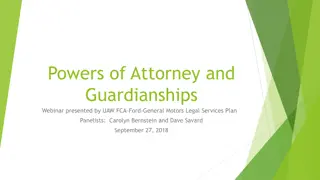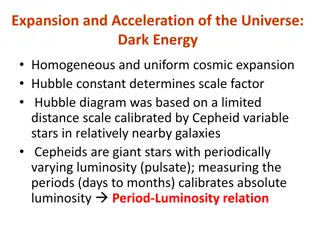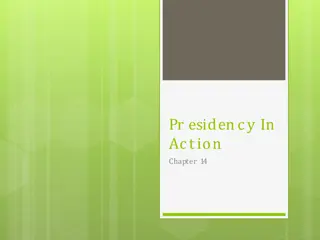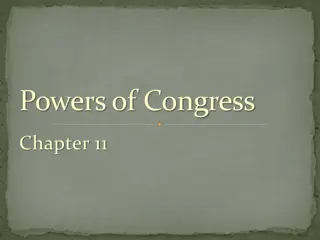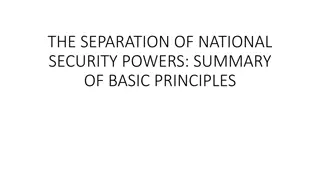Emergence and Expansion of Powers Before the Guptas
Explore the political landscape of ancient India before the rise of the Guptas, including minor powers and rulers like Kushanas, Nagas, Vakatakas, Ikshvakus, and more. Learn about the varied kingdoms and emerging territories shaping the region's history.
Download Presentation

Please find below an Image/Link to download the presentation.
The content on the website is provided AS IS for your information and personal use only. It may not be sold, licensed, or shared on other websites without obtaining consent from the author.If you encounter any issues during the download, it is possible that the publisher has removed the file from their server.
You are allowed to download the files provided on this website for personal or commercial use, subject to the condition that they are used lawfully. All files are the property of their respective owners.
The content on the website is provided AS IS for your information and personal use only. It may not be sold, licensed, or shared on other websites without obtaining consent from the author.
E N D
Presentation Transcript
BA FIRST YEAR(DSC II) DS 1-B; HIST(A) 102 HISTORY OF INDIA,C 300-1206 GUPTAS AND VAKATAKAS; STATE AND ADMINISTRATION, ECONOMY, SOCIETY, POLITY, ECONOMY RELIGION DURING THE GUPTAS PERIOD
ANTECEDENTS ANTECEDENTS In the beginning of the fourth century CE, no large state structure existed in India. However, there were minor powers and new families of rulers who were emerging. In was in this context that the Guptas began to emerge on the political scene. They were a family of uncertain origins. Let us look at the powers which were ruling in different parts of the country before the Guptas appeared on the scene. Before the middle of the third century CE, the power of the Kushanas was considerably reduced by the Sassanians of Iran. They subordinated the Kushanas and the Sassanians rule extended to Sindh and other areas. However numismatic evidence indicates that several branches of Kushanas continued to rule in Afghanistan, Kashmir, western Panjab and it is possible that some of them were contemporaries of early Guptas. Several republican states such as Madras (ruling in Punjab; who have been mentioned in connection with the exploits of Samudragupta), Yaudheyas (present-day Haryana), and Malavas (Rajasthan) and many others which find mention in the Gupta records were ruling over small principalities. Several branches of Nagas who were powerful in Mathura figure also in the context of north India as rulers who were defeated by the Guptas.
The Kshatrapas were ruling in western India till they were defeated by the Gupta ruler Chandragupta II towards the close of the fourth century CE. In ancient Vidarbha, a powerful family known as Vakatakas had emerged by the middle of the third century CE. Matrimonial alliances between the Vakatakas and Guptas brought them into close contact with each other. After the decline of the Satavahanas in Deccan, new royal families emerged in different parts of the Deccan. In coastal Andhra, the Ikshvakus, the Salankayanas and others made their presence felt. Kadambas emerged powerful in Karnataka. The Pallavas in Tamilnadu ruled as a formidable power from the middle of the third century CE till the 9th century CE. The above discussion does not exhaust the list of powers that were emerging in different parts of India. What are described are the most notable ones. It must however be acknowledged that in many areas like Bengal, Odisha, forest regions of Madhya Pradesh and elsewhere kingdoms were emerging for the first time. This new trend was very significant for the later course of political history.
POLITICAL HISTORY OF THE GUPTAS POLITICAL HISTORY OF THE GUPTAS Very little is known about the early Gupta rulers. Whatever we know about them generally comes from the records of later imperial rulers. As a result, there has always been speculation among historians about the ancestry and family of early Guptas. Some of the historians try to trace back their ancestry to any person appearing in the historical records with the name ending with gupta , such as Sivagupta who appeared in a Satavahana inscription. The original core of the Gupta territory lay in eastern UP. This can be surmised from the fact that Samudragupta s Allahabad (now Prayagraj) pillar inscription comes from this region. Besides the coin hoards of the Guptas have been found from this region. Lastly, the Puranas describe the early Gupta territories in this region. It is possible that in the closing decades of the 3rd century CE, the Guptas were subordinates of a branch of later Kushanas ruling in north-west India. However inscriptional and archaeological data suggests that they became independent in the second decade of the fourth century CE.
Inscriptions tell us that Chandragupta was preceded by Srigupta and Ghatotkacha before being mentioned as the first independent king with the title maharajadhiraja. He started an Era in 319- 20 CE known as Gupta Samvat.This is also confirmed from the account of Al-Biruni,who had visited India in the first part of 11th century CE. Historical records do not give us a clear picture about the territories under his control. Though a passage of Vishnu Purana gives us some details about the territories ruled by him. According to this passage the territories of Prayagraj (present-day Allahabad in Uttar Pradesh), Saket (around present day Ayodhya in Uttar Pradesh) and Magadha were under the control of Chandragupta I. But the authenticity of this passage is still not established, thus it is not sure whether these areas were actually controlled by Chandragupta I. The Chandragupta-Kumaradevi (king-queen type) type gold coins of Chandragupta I inform us about the matrimonial alliance between the Gupta king Chandragupta I and Lichchhavis princess Kumaradevi.These coins have Chandragupta and his queen Kumaradevi engraved on the obverse and a seated goddess on the reverse with the legend Lichchhavayah (i.e. the Lichchhavis). The Lichchhavis were ruling in the region of Vaishali (Muzaffarpur in north Bihar) since the 6th century BCE. This alliance not only enlarged his kingdom but also legitimized his rule. The fragmentary information received about the territorial expansion and marriage alliance with Lichchhavis indicate that Chandragupta I might have come to have firm control over the middle Ganga valley, in areas both to the north and south of the river.
Samudragupta Samudragupta (335 During Chandragupta I s successor, Samudragupta s reign, the kingdom grew into an empire. The most important source which gives us information about his accession and conquests is Prayagraj Prashasti (till now known as the Allahabad Prashasti). It was composed by his court poet Harishena who composed 33 lines which were engraved on a pillar. It is a possibility that there may have been a war of succession to the throne before Samudragupta became the king. This is largely due to the discovery of coins bearing the name of Kacha. These coins in many respects are similar to Samudragupta s coins. Many interpretations have been given about these coins. Some historians considered Kacha as the elder brother of Samudragupta, who might have been killed in the war of succession. Other scholars maintain that these were the coins which were issued by Samudragupta in the memory of his bother Kacha. The third interpretation suggests that Kacha was the initial name of Samudragupta and latter name was acquired by him after the conquest of the South. Except these coins not much is known about Kacha from other sources; this name does not even appear in official Gupta inscriptions. Prayagraj Prashasti depicts Samudragupta as an extraordinary person and an ideal king. (335- -75 CE) 75 CE)
Samudragupta adopted an aggressive policy of conquests. Regarding his campaigns in Aryavarta, some scholars believe that he carried his conquests of Aryavarta at one time only. However, some other historians believe that there were two campaigns in Aryavarta. This is so because the Prashasti first mentions the subjugation of three Aryavarta kings, being followed by his southern campaigns, and then again mentions the defeat of nine Aryavarta kings. The kings of Aryavarta that were defeated by him were Achyuta (ruling over Ahichchatra), Nagasena (ruling over Gwalior region) and Kota-Kulaja (the ruler of the Kota family in east Punjab and Delhi). By defeating them Samudragupta established firm control over the Ganga valley and some adjacent regions. Regarding his campaigns in south India, twelve rulers were defeated by him which Regarding his campaigns in south India, twelve rulers were defeated by him which included: included:
1) Mahendra of Kosala (Raipur, Durg, Sambalpur and Bilaspur districts) 2) Vyaghraraja of Mahakantara (Jeypore, forest region of Odisha) 3) Mantaraja of Kaurata (Sonpur area in Madhya Pradesh or Plain country to the north-east of Mahendra hill) 4) Mahendragiri of Pishtapura (Pithasuram, East Godavari district) 5) Svamidatta of Kottura (Ganjam district) 6) Damana of Erandapalla (Chicacole or West Godavari district) 7) Vishnugopa of Kanchi (Chingelput district) 8) Nilaraja of Avamukta (Godavari valley) 9) Hasti-varman of Vengi (Cellor in the Krishna-Godavari delta) 10) Ugresena of Palakka (Nellore district) 11) Kubera of Devarastra (Yellamanchiti in Visakhapatnam district) 12) Dhananjaya of Kushthalpura (in North Arcot district in Tamilnadu)
Regarding the kings of south India or Dakshinapatha, Samudragupta first captured them (grahana) and then released them (moksha). However, he followed a completely different policy with regard to the kings of Aryavarta. He subjugated them and annexed their territories. The north Indian kings defeated by Samudragupta were: Rudradwa, Ganapatinaga. Nagasena, Archyuta, Nandi, Balavarman, and others. The Prashasti further states that Samudragupta reduced the states in the forest regions to servitude. The frontier kings defeated by him included: Samatata (in southeast Bengal), Kamarupa (Assam), Nepala (Nepal) and others; republican states of the Malavas, Yaudheyas, Madrakas, Abhiras etc. All these rulers paid rich tributes to him and accepted his suzerainty. The foreign rulers of north-western India like the later Kushanas and the Saka chief and residents of different island countries including Sinhala or Sri Lanka not only surrendered to him but also offered their daughters in marriage. At the end of his reign, most parts of north India were directly under the control of Samudragupta, except Kashmir, western Punjab, Rajasthan, Sindh and Gujarat. He also directly controlled the highland of central India to the east of Jabalpur, Chhattisgarh, Odisha and the area on eastern coast at least up to Chingleput. Matila, Nagadatta, Chandravarma,
Chandragupta II (375-414 CE) Under Chandragupta II, the son and successor of Samudragupta, the growth and spread of Gupta power reached its peak. Coins, inscriptions and some literary sources give information about Chandragupta II s reign. The Gupta inscriptions mention Chandragupta II as the successor of Samudragupta. However, a 7th century dramatist Vishakhadatta in his drama Devichandraguptam mentions that Chandragupta II killed his elder brother, Ramagupta. This was so because Ramagupta was facing defeat at the hands of the Sakas and in order to save the kingdom, Ramagupta had agreed to surrender his wife to the Saka king. Chandragupta opposed this and went to the Saka camp in the guise of queen Dhruvadevi I, the wife of Ramagupta. He was successful against the Saka king. However, in the ensuing hostility between Chandragupta II and his brother Ramagupta, he killed the latter and married his widow Dhruvadevi. Certain other texts like the Harshcharita and Kavyamimansa also refer to this episode.Thus, Chandragupta II came to the throne to re-establish the supremacy of Guptas. He established matrimonial relations with the Nagas by marrying princess Kubernaga whose daughter Prabhavati was later married to Rudrasena II of the Vakataka family. He established matrimonial alliance with Kadambas of Karnataka as well. He defeated the Saka Kshatrapa king Rudrasimha-III and brought an end to their rule in western India. As a result, the regions of Gujarat, Kathiawad and western Malwa were added to the Gupta Empire. Mehrauli Iron Pillar Inscription is identified by many scholars with Chandragupta-II. According to this inscription Chandra crossed the Sindhu region of seven rivers and defeated Valhikas (Balkh in Afghanistan).This inscription also mentions about his victory over enemies from Vanga (Bengal).
On the basis of these evidences it can be suggested that Chandragupta II was able to extend the frontiers of Gupta Empire in western, north-western and eastern India. Chandragupta II ruled till 415-16 CE Kumaragupta I (414-54) At the time of the death of Chandragupta II, the Gupta empire extended from the greater part of north India to the Kathiawad peninsula. As a result, there was no one who could challenge their power. Hence, the reign of Kumaragupta I, son and successor of Chandragupta II, was marked by only a few military campaigns. From his inscriptions it seems that he certainly retained firm control over the core area of the empire. His reign was also known for political consolidation and prosperity. However, at the end of his reign, the Gupta empire faced Huna invasion in north-west region which was checked by his son Skandagupta.
Skandagupta Skandagupta (454 Skandagupta is generally considered the last important ruler of Gupta Empire, who ruled over a vast territory. From the beginning of his reign he started facing various troubles in his realm. The Bhitari inscription informs us that at the very beginning of his reign Pushyamitras posed trouble. Though he was successful in averting the onslaught of Hunas, these campaigns cost the kingdom dearly. Scholars maintain that his gold coins were not only limited but also had less gold in them as compared with the earlier rulers. He was the last Gupta ruler to mint silver coins in western India. (454- -467) 467)
A D M I N I S T R A T I O N Guptas as a political power ruled in north India for about two and half century and out of this period they functioned as an empire for almost 150 years. The Gupta power at its peak extended from Kathiawar peninsula in Gujarat in the west to Bengal in the east and from north-west India in the north to Madhya pradesh in south. This however does not mean that the entire area was directly ruled by the central authority; there were areas like Bengal, Bihar and Uttar Pradesh which the Guptas administered through officials appointed by them; even in far-flung Saurashtra in Gujarat, governors were appointed by the Gupta rulers like Skandagupta. Elsewhere in the Malwa region, the Guptas maintained their suzerainty through political and matrimonial alliances with various autonomous powers. In administration the Guptas borrowed various features from their predecessors such as Mauryas, Kushanas and Satavahanas. King was the central figure of the administrative system and it was reflected by the titles held by them, such as maharajadhiraja, parama-bhattaraka, parmeshvara, samarat and dharmmamaharaja. They were considered divine rulers on earth.
The duties of the king were the following: The duties of the king were the following: 1) Despite the supreme power vested in him, he was expected to follow a righteous path. 2) He was supposed to decide the policy of the state during war and peace. 3) He should always protect his countrymen from any invasion. 4) He led the army in case of war. 5) He should support the brahmanas, Sramanas and others who needed his protection. 6) He was supposed to venerate the learned and religious people and give them every possible help. 7) As the Supreme judge he was to look after the administration of justice according to religious precepts and customs. 8) He appointed his central and provincial ministers. 9) As a reigning king he appointed the successor to the throne.
The king was thus the focus of administration. He was assisted by princes, ministers and advisors. The princes also held positions like viceroys of provinces. The king used to issue written instructions to officials on all important matters. In some cases, the office of the functionaries became hereditary. Inscriptions suggest that Gupta administration was more decentralised as compared to that of the Mauryas. The Gupta administration made some efforts at restructuring the agrarian economy. This is indicated by land grants where the donees were expected to augment agricultural potential of the region. It was in this way that cultivation of fertile, irrigated lands was improved, and settlement of wasteland was encouraged. The initial land grants were not in the centre but the areas beyond. Thus, this initiative brought peripheral regions into the larger agrarian economy. The high-ranking officers included the Mahadandanayaka (Chief Justice) who assisted the king in the matters of justice. In the provinces this work was entrusted to the Uparikas and in the districts to the vishayapatis. In the villages the headman and the village elders used to decide upon petty cases. The other high officials included the Mahapratihara (chief of the palace guards), Pratihara (regulated ceremonies and granted necessary permits for admission to the royal presence), Dutakas (implemented gifts when gifts of land were made to the brahmanas and others). There existed an espionage system as well.
For facilitating the efficient functioning of administration, the kingdom was generally divided into a number of regions or provinces, headed by governors appointed by the king. These provinces were known as the deshas, rashtras or bhuktis. Some of the provinces mentioned in Gupta inscriptions are Tirabhukti (corresponded to north Bihar), Nagarabhukti, Magadhabhukti and Pundravardhanabhukti (corresponded to north Bengal). The bhuktis were governed by Uparikas directly appointed by the king. The territorial units under the provinces (bhukti/desha) were known as vishaya (governed by vishayapati or in some cases by Ayuktaka). He was appointed by provincial governor. The inscriptions from Bengal indicate that the vishayapati associated himself with Nagarsresthi (head of city merchants), Sarthavaha (caravan leader), PrathamaKulika (head of the artisan community) and Prathamakayastha (head of the kayastha community). Apart from these Pustapalas were officials who managed and kept records. The administrative units below the district were referred differently in different regions, such as vithi, ashtakuladhikarana, bhumi, pathaka and petha. It seems that these units were placed above several villages and were administrated by different officials such as ayuktakas and vithi-mahattaras. The lowest unit of administration was known as the grama which was headed by a gramika or gramadhyaksha. It is not very clear whether these officials were appointed by higher authorities or selected with the permission of villagers.
ARMY ARMY Without any doubt, the army functioned as one of the important elements of the state during this period. Normally divided in various divisions (chariots, infantry, cavalry and elephants), it was headed by different chiefs and commanders. Though in some contemporary texts (such as Kamandakiya Nitisara) the chariot division was generally considered an integral part of the army, but, by this time their use in warfare had become rare. It is not very clear whether the officer named dandanayaka functioned as a military commander or a judicial officer. Officers named asvapati and pilupati respectively commanded the cavalry and elephant divisions. The senapati, mainly synonymous with the military commander, quite frequently functioned as local administrator. Engaging in constant war might have created some new designatof war and peace). Chata-bhata were known as the regular and irregular troops and most probably performed the task of local police. One individual could hold multiple offices; for example the posts of kumaramatya, sandhivigrahika and mahadandanayaka were held by Harishena, the court poet of Samudragupta. The army was paid in cash and its needs were well looked after by an officer-in-charge of stores called Ranabhandagarika. This officer also looked after the supply of weapons such as battle-axes, bows and arrows, spear pikes, swords, lances, javelins et.ions such as sandhivigrahika (officer-in-charge
ECONOMY ECONOMY Though agriculture was the mainstay of economy, there were other occupations as well such as commerce and production of crafts. Different social groups were engaged in these occupations. It is important to realise that certain changes had started taking place in the pattern of economic production and consequently in relations between different social groups. We will be discussing these changes below. The revenue generated from agriculture was the main source of income for state. For collecting this revenue, a large section of officials was appointed. Contemporary sources (such as Amarakosha) give information about the diverse type of crops produced in this period such as paddy, cotton, oil-seeds, indigo, mustard seeds etc.The people of this period had good knowledge of agriculture and they were aware about the different types of soils. In this regard Amarakosha give us information about twelve types of soils urvara (fertile), ushara (dry), maru (desiccated), aprahata (untilled), sadbala (grassy land), pankila (covered with mud), jalaprayamanupam (land located near a source of water), kachcha (marshy), sarkara, sarkati, nadimatrika (well-watered by rivers) and devematrika (area well fed by rain). The cultivated land was called as kshetra and uncultivated land was called by various names such as khila or aprahata.
Land grants not merely give us information about different types of lands given to different donees but also provide information about land measurement. The Gupta land grant records from Bengal inform us about a unit known as vapa which was used for measuring land in the region (adhavapa, dronvapa, kulyavapa). It is derived from root vap (to sow).The exact size of this unit is not clearly mentioned. Same grants mention a rod (nala), that might have been used for linear measurement. Though evidence indicates that there was diversity in land measurement, occasionally at some places we also find some standardization. In addition to type and systems of land measurement, the land records from Bengal also provide information about the price of plots. The price of agriculture and non-agriculture plots varied according to the quality of soil, fertility, location, region and so on. Irrigation was considered important. Locally managed irrigation devices like the ghati-yantra also called the araghatta were in vogue. Different irrigation practices existed in the Gupta kingdom. Mention may be made of Sudarshana reservoir (tadaga) in Saurashtra in Gujarat. Originally built in the Mauryan period, this reservoir was thoroughly repaired when it was extensively damaged in the time of Mahakshatrapa Rudradaman (middle of the second century CE). It was again damaged in the time of Skandagupta; Purnadatta, his newly appointed governor of Saurashtra and his son, Chakrapalita, undertook the repair of the reservoir at this time. Copper plates of this period clearly mention tanks and ponds (tadaga and pushkarini), marshy areas and ditches (jola, hajjika and khata) and embankments along rivers (ali, brihadali) as mediums of irrigation. State was not wholly responsible for providing irrigation facilities. Much of agriculture was also rain dependent.
The items produced through crafts as well as raw material required for their production was not easily available everywhere. They were made available through trade. The term used for commercial transactions was known as krayavikraya. For smooth function of this transaction various types of coins were issued by different rulers. In ancient India, the Guptas were known for issuing the largest number of gold coins, which were called dinaras in their inscriptions. However, in gold content the Gupta coins are not as pure as the Kushana ones and most probably not used by ordinary peoples in their daily transactions. Daily transaction mostly was done in copper coins or other modes of currency. But in contrast to those of the Kushanas, the Gupta copper coins are very few. Thus, it seems that commercial activities in this period were not as flourishing as they were in Kushana period. Moreover, in comparison to the earlier period, decline was noticed in long-distance trade in this period. This happened because around 550 CE people of the eastern Roman (Byzantine) empire gained knowledge of growing silk from the Chinese. This adversely affected India s position as India had played an important role in the earlier Silk trade. The archaeological remains of the urban centres of this period also point towards decline.
SOCIETY SOCIETY The position of brahmanas in the social order was already high before the Gupta period. They came to be related to the royal power. The royal patronage and land grants by individuals and institutions to brahmanas made them even more powerful. Not only individual brahmanas but also a group of brahmanas were encouraged through land grants to settle on virgin lands. Thus, the number of brahmana settlements which were called agraharas or brahmadeyas increased. The kings patronised the brahmanas irrespective of the former s religious affiliation. This was one of the main reasons for the economic prosperity and prestige of the brahmanas. The idea of the varna divided social order became the norm. Though the varna system was the ideal social order there were many whose varna identity could not be determined. Thus, the law books or Dharmashastras tried to determine the status of various jatis or castes in society by giving fictitious explanations about their origins. They suggested that various jatis or groups had originated through varnasamkara or inter marriages between the various varnas. The castes proliferated into numerous sub-castes or jatis. Many foreigners had been assimilated into Indian society, and each group of foreigners was given a semi-kshatriya status (vratyakshatriyas) because they could not be considered to be of pure kshatriya origin. Due to the absorption of various tribal groups into the Brahmanical society and due to the expansion of agriculture into forest territories, fictitious titles were thought of for tribal groups. Various other groups like the untouchables or antyajas were considered impure. Similarly, chandalas, charmakaras and similar groups were considered as outcastes. Fa-hsien informs us that the chandalas lived outside the village and dealt in meat and flesh. Thus, such groups continued to be miserable in the Gupta period. The position of shudras, however, improved slightly during this period. They were now permitted to listen to recitations of the Ramayana, Mahabharata, and Puranas but not the Veda, which was still considered sacred.
CULTURE UNDER THE GUPTAS The Gupta period has often been referred to as the Golden Age due to its cultural heritage. This applies to great accomplishments in the field of art and architecture, language and literature. The Gupta age, thus, stands out as a significant and noteworthy departure from previous historical periods, particularly in the cultural history of India due to impressive standards achieved by artistic and literary expressions of this time. It has been rightly commented that the Gupta art represents ancient Indian art at its best. From the vantage point of architecture, the Gupta period reflects creative enthusiasm and deep sense and awareness of beauty. These are evident in the Dashavatara temple at Deogarh in Jhansi district (UP), Bhitargaon temple near Kanpur (UP), Vishnu temple at Tigawa (Jabalpur district, MP), Shiva temple at Bhumara (Satna district, MP), Parvati temple at Nachna-Kuthara (Panna district, MP) etc. Some of them are adorned with beautiful sculptural panels. The Gupta temple-building activity represents evolution from the earlier tradition of rockcut shrines which now reached a whole new level. However, the high and elaborately carved sikharas (towers) on top of the temples were yet to register their appearance. Therefore, Gupta period marks the formative phase of temple construction in India, but it was a significant phase that continued to influence temple- building activity right up to the medieval period.
What we now refer to as Classical Sanskrit developed during the Guptas. Sanskrit was widely patronized by Gupta rulers, making it the official language of their court. All their inscriptions are written in Sanskrit. Ignored earlier under the influence of Buddhist and Jaina traditions that encouraged vernacular dialects like Pali, Prakrit and Ardhamagadhi, Sanskrit saw its revival under the Guptas. It became a widespread language in entire north India during the Gupta period. Even Buddhist scholars, particularly those of Mahayana Buddhism, began composing their scriptures in Sanskrit. Great poets, dramatists, grammarians and playwrights of Sanskrit are known from this period. The epics Ramayana and Mahabharata are believed to have been compiled and given their final form around 4th-5th century CE. The great Sanskrit writer-poet Kalidasa one of the Navaratnas (nine gems) of the court of Gupta king Chandragupta Vikramaditya wrote dramas like Abhijnana-Shakuntalam, Malavikagnimitram, Vikramorvashiyam and poetic works such as Raghuvamsham, Kumarasambhavam and Meghadutam which show the excellent literary standards achieved during the Gupta period. Besides these, Varahamihira wrote Brihat Samhita that deals with scientific subjects like astronomy and botany. Aryabhatta wrote Aryabhattiyam: a famous work on geometry, algebra, arithmetic and trigonometry. The notable creations on medicine include Charaka Samhita and Sushruta Samhita. An all-round progress in literature was manifest during this time.
SUMMARY In the beginning of the fourth century CE, north India was divided into many small kingdoms and chieftaincies. It was in this political scenario that the Guptas rose as a powerful family of rulers. Successful military campaigns, robust administration, sound economic and social footing made them one of the strongest in north India. However, from the later part of the Gupta period and in the postGupta period certain changes began to accelerate which transformed the economic and social set up. This is clearly seen from the practice of land grants which became very common in the post-Gupta period. The position of outcastes and slaves became very miserable though some improvement in the position of the shudras could be seen. Craft activity delined though great achievements in the realm of art and architecture could be seen.
